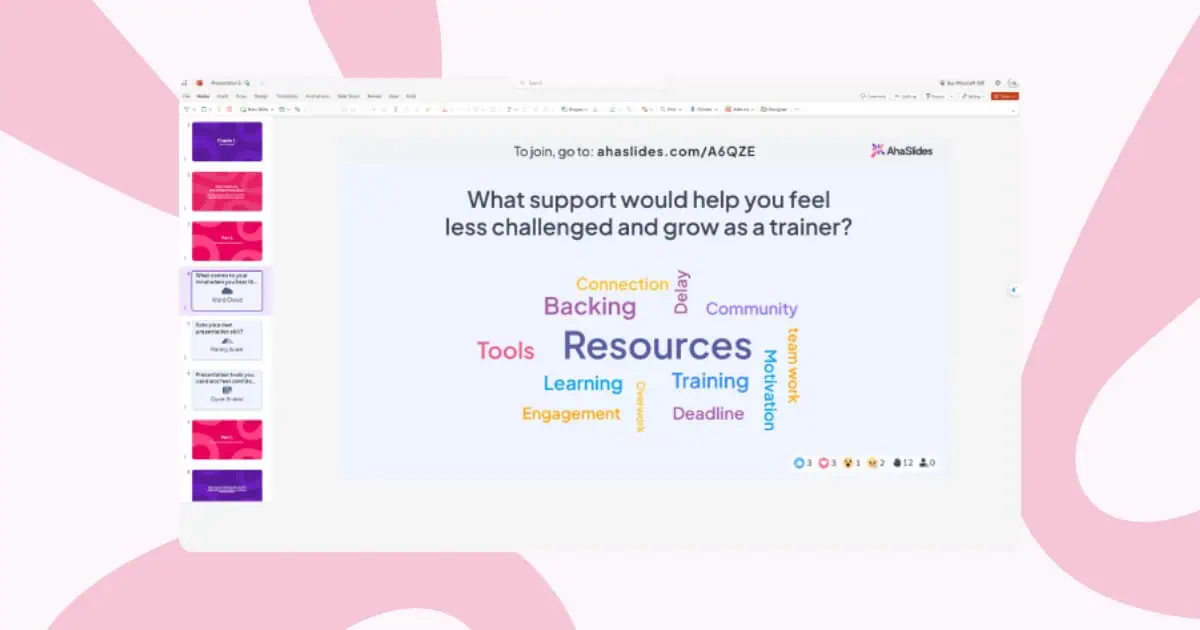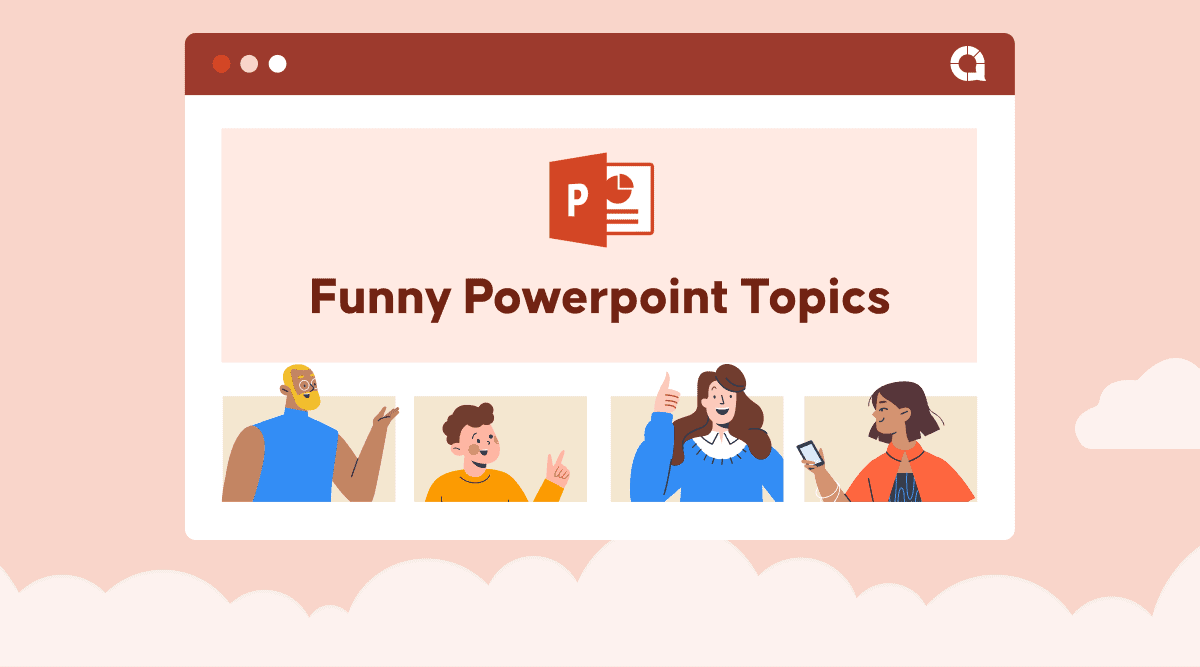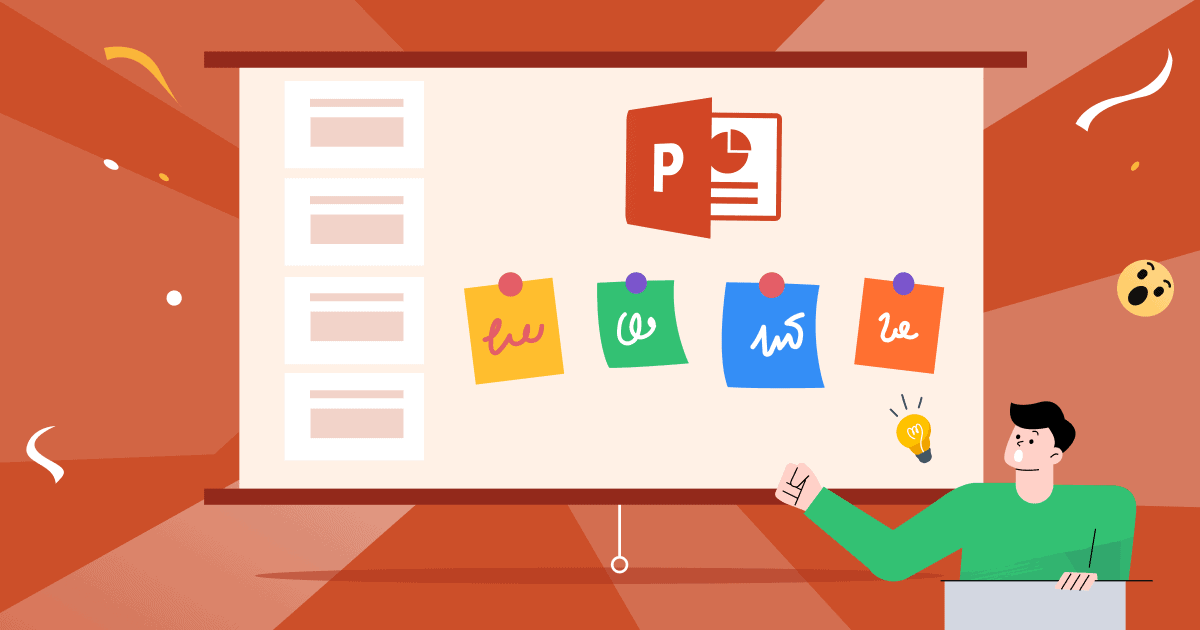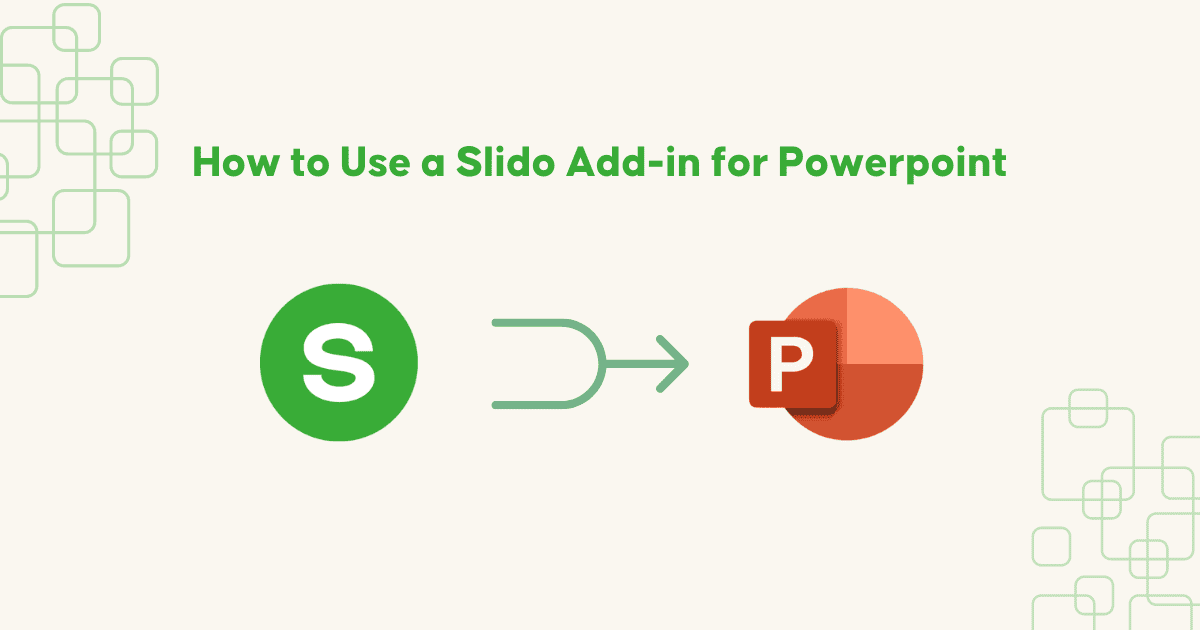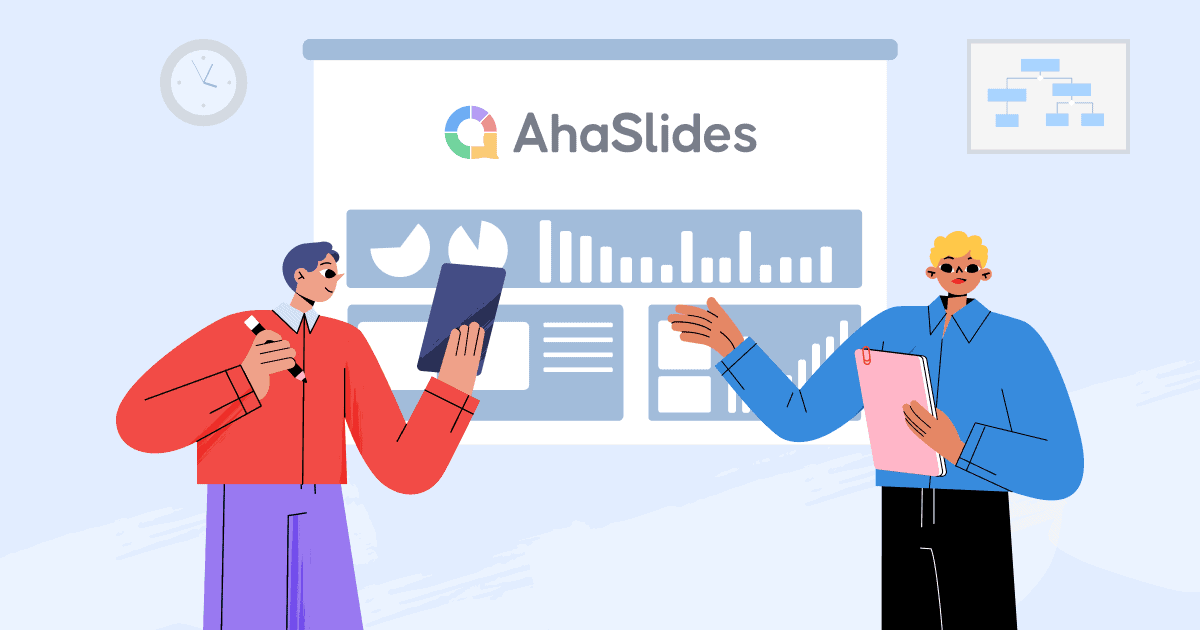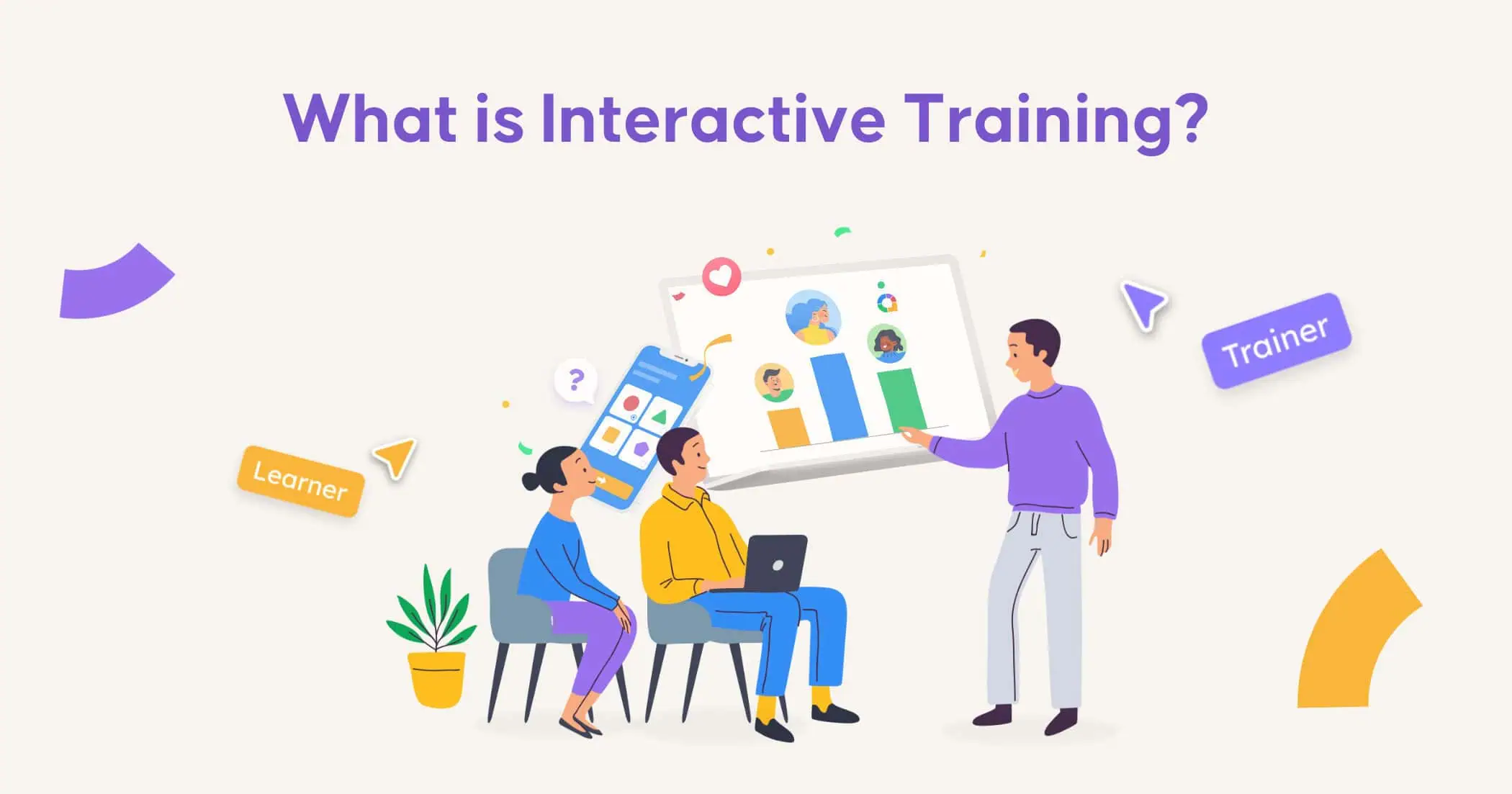A PowerPoint presentation that goes the extra mile with interactive elements can result in up to 92% audience engagement. Why?
Take a look:
| Factors | Traditional PowerPoint Slides | Interactive PowerPoint Slides |
|---|---|---|
| How audience acts | Just watches | Joins in and takes part |
| Presenter | Speaker talks, audience listens | Everyone shares ideas |
| Learning | Can be boring | Fun and keeps interest |
| Memory | Harder to remember | Easier to remember |
| Who leads | Speaker does all talking | Audience helps shape talk |
| Showing data | Basic charts only | Live polls, games, word clouds |
| End result | Gets point across | Makes lasting memory |
The real question is, how do you make your PowerPoint presentation interactive?
Don't waste more time and jump straight into our ultimate guide on how to make an interactive PowerPoint presentation with two easy and distinctive methods, plus free templates to deliver a masterpiece.
Table of Contents
Method 1: Audience Participation Interactivity Using Add-Ins
Navigation-based interactivity improves content flow, but it doesn't solve the fundamental problem of live presentations: audiences sitting passively whilst one person talks at them. Creating genuine engagement during live sessions requires different tools.
Why audience participation matters more than fancy navigation
The difference between interactive navigation and interactive participation is the difference between a Netflix documentary and a workshop. Both can be valuable, but they serve completely different purposes.
With navigation interactivity: You're still presenting TO people. They watch whilst you explore content on their behalf. It's interactive for you as the presenter, but they remain passive observers.
With participation interactivity: You're facilitating WITH people. They actively contribute, their input appears on screen, and the presentation becomes a conversation rather than a lecture.
Research consistently shows that active participation drives dramatically better outcomes than passive viewing. When audience members answer questions, share opinions, or submit queries from their phones, several things happen simultaneously:
- Cognitive engagement increases. Thinking through poll options or formulating answers activates deeper processing than passively receiving information.
- Psychological investment rises. Once people have participated, they care more about outcomes and continue paying attention to see results and hear others' perspectives.
- Social proof becomes visible. When poll results show that 85% of your audience agrees with something, that consensus itself becomes data. When 12 questions appear in your Q&A, the activity becomes contagious and more people contribute.
- Shy participants find voice. Introverts and junior team members who'd never raise hands or speak up will submit questions anonymously or vote in polls from the safety of their phones.
This transformation requires tools beyond PowerPoint's native features, because you need actual response collection and display mechanisms. Several add-ins solve this problem.
Using AhaSlides PowerPoint add-in for live audience participation
AhaSlides offers a free PowerPoint add-in that works on both Mac and Windows, providing 19 different interactive slide types including quizzes, polls, word clouds, Q&A sessions, and surveys.
Step 1: Create your AhaSlides account
- Sign up for a free AhaSlides account
- Create your interactive activities (polls, quizzes, word clouds) in advance
- Customise questions, answers, and design elements
Step 2: Install the AhaSlides add-in in PowerPoint
- Open PowerPoint
- Navigate to the 'Insert' tab
- Click 'Get Add-ins' (or 'Office Add-ins' on Mac)
- Search for "AhaSlides"
- Click 'Add' to install the add-in
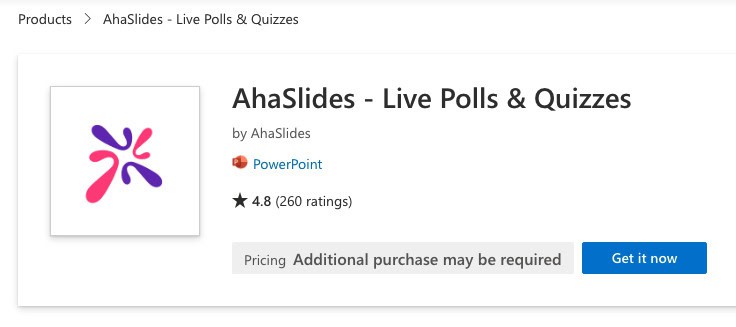
Step 3: Insert interactive slides into your presentation
- Create a new slide in your PowerPoint presentation
- Go to 'Insert' → 'My Add-ins'
- Select AhaSlides from your installed add-ins
- Log in to your AhaSlides account
- Choose the interactive slide you want to add
- Click 'Add Slide' to insert it into your presentation

During your presentation, a QR code and a join link will appear on interactive slides. Participants scan the QR code or visit the link on their smartphones to join and participate in real time.
Still confused? See this detailed guide in our Knowledge Base.
Expert Tip 1: Use an Ice Breaker
Beginning any presentation with a quick interactive activity helps break the ice and sets a positive, engaging tone. Icebreakers work particularly well for:
- Workshops where you want to gauge audience mood or energy
- Virtual meetings with remote participants
- Training sessions with new groups
- Corporate events where people may not know each other
Example icebreaker ideas:
- "How's everyone feeling today?" (mood poll)
- "What's one word to describe your current energy level?" (word cloud)
- "Rate your familiarity with today's topic" (scale question)
- "Where are you joining from?" (open-ended question for virtual events)
These simple activities immediately involve your audience and provide valuable insights about their state of mind, which you can use to adjust your presentation approach.

💡 Want more icebreaker games? You'll find a whole bunch of free ones right here!
Expert Tip 2: End with a Mini-Quiz
Quizzes aren't just for assessment—they're powerful engagement tools that transform passive listening into active learning. Strategic quiz placement helps:
- Reinforce key points - Participants recall information better when tested
- Identify knowledge gaps - Real-time results show what needs clarification
- Maintain attention - Knowing a quiz is coming keeps audiences focused
- Create memorable moments - Competitive elements add excitement
Best practices for quiz placement:
- Add 5-10 question quizzes at the end of major topics
- Use quizzes as section transitions
- Include a final quiz covering all main points
- Display leaderboards to create friendly competition
- Provide immediate feedback on correct answers
On AhaSlides, quizzes work seamlessly within PowerPoint. Participants compete for points by answering quickly and correctly on their phones, with results appearing live on your slide.
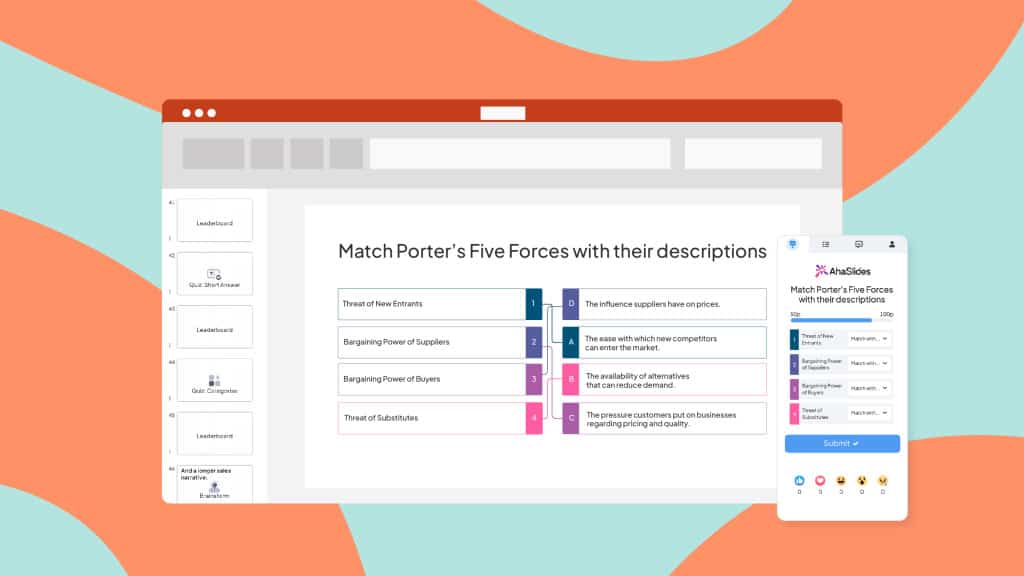
On AhaSlides, quizzes work the same way as other interactive slides. Ask a question and your audience compete for points by being the fastest answerers on their phones.
Expert Tip 3: Mix Between a Variety of Slides
Variety prevents presentation fatigue and maintains engagement throughout longer sessions. Instead of using the same interactive element repeatedly, mix different types:
Interactive slide types available:
- Polls - Quick opinion gathering with multiple choice options
- Quizzes - Knowledge testing with scoring and leaderboards
- Word clouds - Visual representation of audience responses
- Open-ended questions - Free-form text responses
- Scale questions - Rating and feedback collection
- Brainstorming slides - Collaborative idea generation
- Q&A sessions - Anonymous question submission
- Spinner wheels - Random selection and gamification
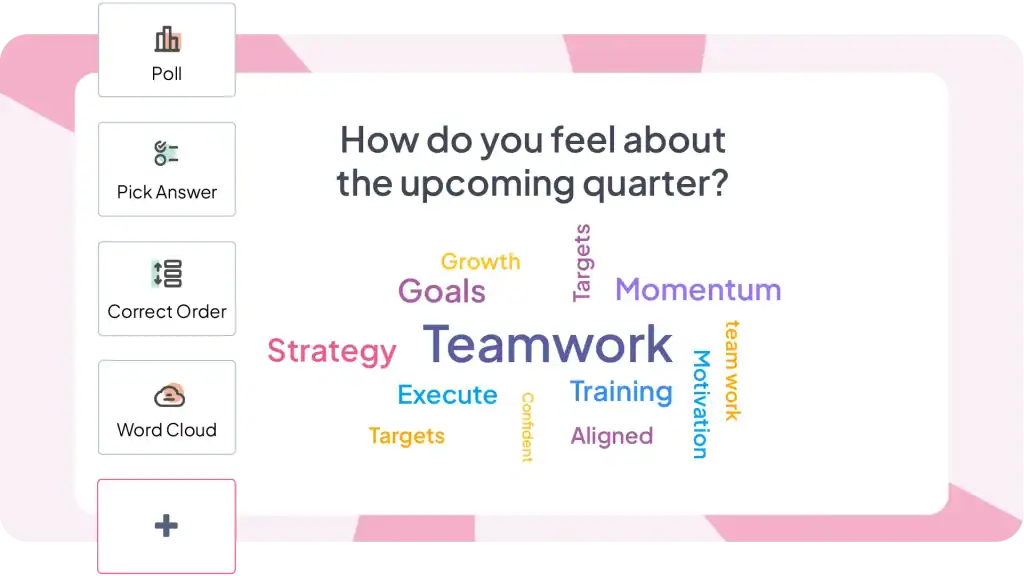
Recommended mix for a 30-minute presentation:
- 1-2 icebreaker activities at the start
- 2-3 polls throughout for quick engagement
- 1-2 quizzes for knowledge checks
- 1 word cloud for creative responses
- 1 Q&A session for questions
- 1 final quiz or poll to wrap up
This variety keeps your presentation dynamic and ensures different learning styles and participation preferences are accommodated..
Other Add-In Options Worth Considering
AhaSlides isn't the only option. Several tools serve similar purposes with different focuses.
ClassPoint integrates deeply with PowerPoint and includes annotation tools, quick polls, and gamification features. Particularly popular in education contexts. Stronger on in-presentation tools, less developed for pre-presentation planning.
Mentimeter offers beautiful visualisations and word clouds. Premium pricing reflects polished design. Better for occasional large events than regular meetings due to cost.
Poll Everywhere has been around since 2008 with mature PowerPoint integration. Supports SMS responses alongside web, useful for audiences uncomfortable with QR codes or web access. Per-response pricing can get expensive for frequent use.
Slido focuses on Q&A and basic polling. Particularly strong for large conferences and town halls where moderation matters. Less comprehensive interaction types compared to all-in-one platforms.
The honest truth: all these tools solve the same core problem (enabling live audience participation in PowerPoint presentations) with slightly different feature sets and pricing. Choose based on your specific needs - education vs. corporate, meeting frequency, budget constraints, and which interaction types you need most.
Method 2: Navigation-Based Interactivity Using PowerPoint Native Features
PowerPoint includes powerful interactivity features that most people never discover. These tools let you create presentations where viewers control their experience, choosing which content to explore and in what order.
1. Hyperlinks
Hyperlinks are the simplest way to create interactive PowerPoint presentations. They let you connect any object on a slide to any other slide in your deck, creating pathways between content.
How to add hyperlinks:
- Select the object you want to make clickable (text, shape, image, icon)
- Right-click and choose "Link" or press Ctrl+K
- In the Insert Hyperlink dialogue, select "Place in This Document"
- Choose your destination slide from the list
- Click OK
The object is now clickable during presentations. When presenting, clicking it jumps directly to your chosen destination.
2. Animation
Animations add movement and visual interest to your slides. Instead of text and images simply appearing, they can "fly in", "fade in", or even follow a specific path. This grabs your audience's attention and keeps them engaged. Here are some types of animations to explore:
- Entrance animations: Control how elements appear on the slide. Options include "Fly In" (from a specific direction), "Fade In", "Grow/Shrink", or even a dramatic "Bounce".
- Exit animations: Control how elements disappear from the slide. Consider "Fly Out", "Fade Out", or a playful "Pop".
- Emphasis animations: Highlight specific points with animations like "Pulse", "Grow/Shrink", or "Color Change".
- Motion paths: Animate elements to follow a specific path across the slide. This can be used for visual storytelling or emphasising connections between elements.
3. Triggers
Triggers take your animations a step further and make your presentation interactive. They allow you to control when an animation happens based on specific user actions. Here are some common triggers you can use:
- On click: An animation starts when the user clicks on a specific element (e.g., clicking an image triggers a video to play).
- On hover: An animation plays when the user hovers their mouse over an element. (e.g., hover over a number to reveal a hidden explanation).
- After the previous slide: An animation starts automatically after the previous slide has finished displaying.
Looking for More Interactive PowerPoint Ideas?
Most guides oversimplify interactive PowerPoint into "here's how to add animations and hyperlinks." That's like reducing cooking to "here's how to use a knife." Technically accurate but missing the point entirely.
Interactive PowerPoint comes in two fundamentally different flavours, each solving distinct problems:
Navigation-based interactivity (PowerPoint native features) creates explorable, self-paced content where individuals control their journey. Build this when creating training modules, sales presentations with varied audiences, or kiosk displays.
Audience participation interactivity (requires add-ins) transforms live presentations into two-way conversations where audiences actively contribute. Build this when presenting to teams, running training sessions, or hosting events where engagement matters.
For navigation-based interactivity, open PowerPoint and start experimenting with hyperlinks and triggers today.
For audience participation, try AhaSlides free - no credit card required, works directly in PowerPoint, 50 participants included on free plan.
Frequently Asked Questions
How can you make slides more interesting?
Start by writing out your ideas, then get creative with the slide design, keep the design consistent; make your presentation interactive, then add animation and transitions, Then align all objects and texts throughout all the slides.
What are the top interactive activities to do in a presentation?
There are lots of interactive activities that should be utilised in a presentation, including live polls, quizzes, word cloud, creative idea boards or a Q&A session.
